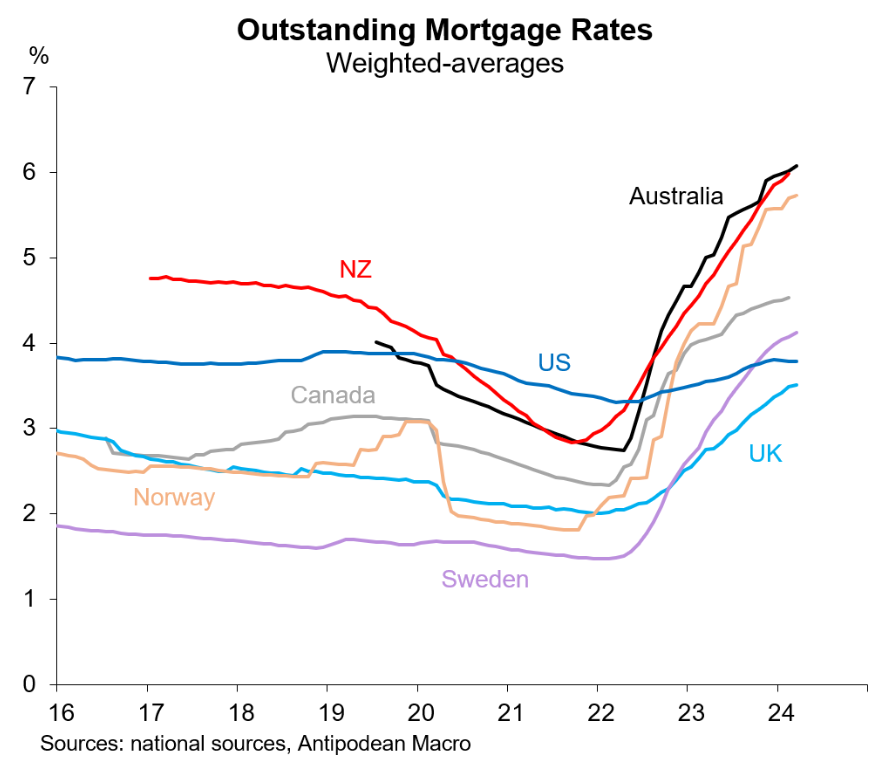The ABC reports that the sharp economic downturn in New Zealand is driving larger numbers of Kiwis to migrants to Australia for work.
New Zealand’s unemployment and underemployment rates are on the rise, with unemployment expected to hit 5% by the end of the year.
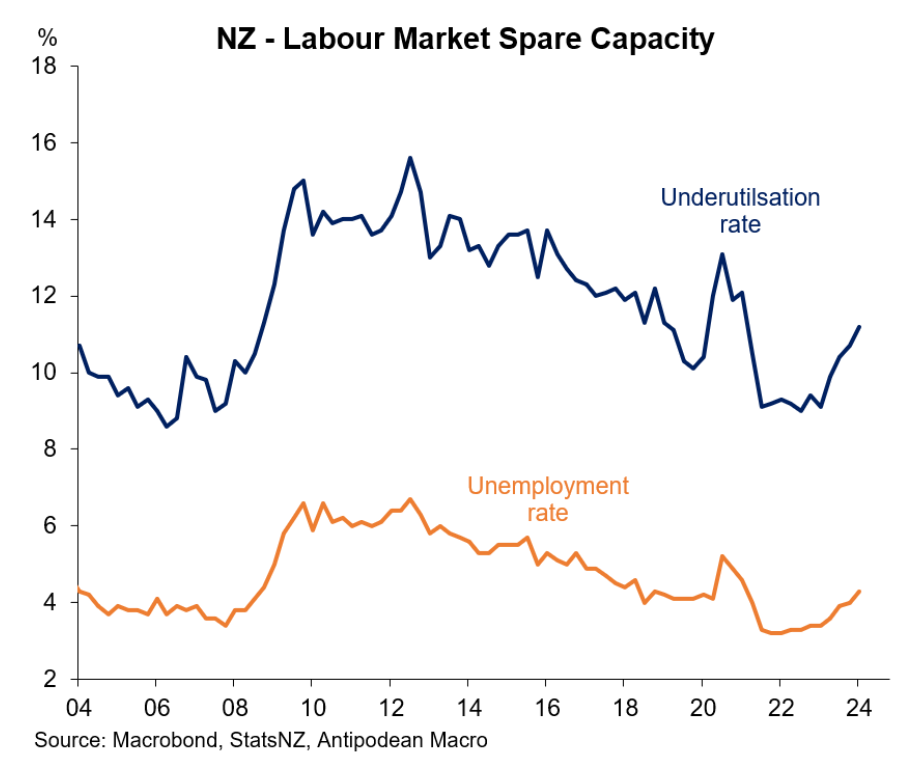
The newly elected National Government has announced that around 4,000 public service jobs will be cut across more than 30 agencies amid a directive for spending cuts of up to 7.5% across the board.
“We are going to see those show up in the unemployment numbers later on in the year”, Principal economist at Infometrics Brad Olsen said.
Olsen also warned that unemployment would rise because immigration is running near record levels.
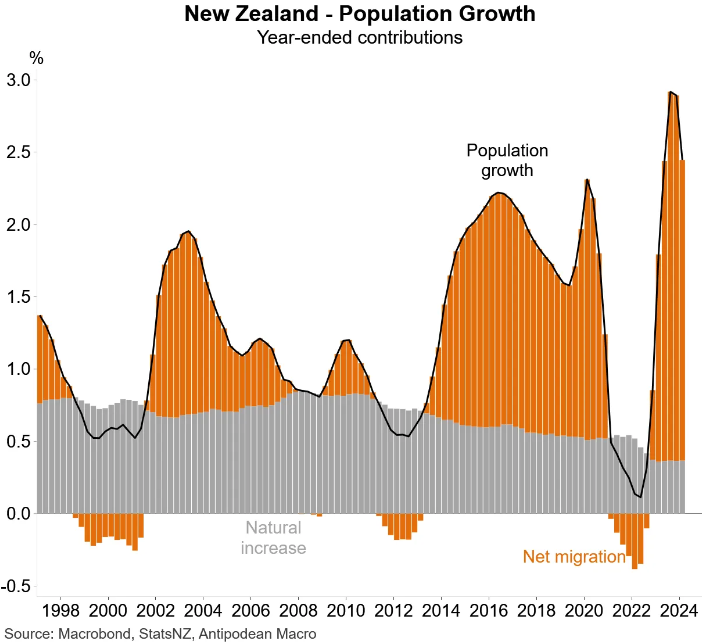
Accordingly, more workers are chasing jobs in the slowing economy.
“There are more people in the population that aren’t getting work and there’s also the start of job losses actually starting to come through in the economy”, Olsen said.
“The expectation from most forecasters, including ourselves, is for the unemployment rate to increase to 5% by the end of the year”.
“It’s one of the most simple equations we’ve got at the moment”.
“We’ve got near record population growth. Last year [saw] the fastest New Zealand population growth since World War II”.
“There’s a lot more people coming and looking for jobs, over the last year though job ads have fallen 30% and are now 17% below pandemic levels”.
“So a lot more people struggling or competing for much more limited roles”, Olsen said.
SEEK’s latest employment data paints a worrying picture. As noted by Olsen, the number of job ads has collapsed to around 2016 levels.
At the same time, the number of applicants per job ad has soared way above the pandemic peak to record highs:
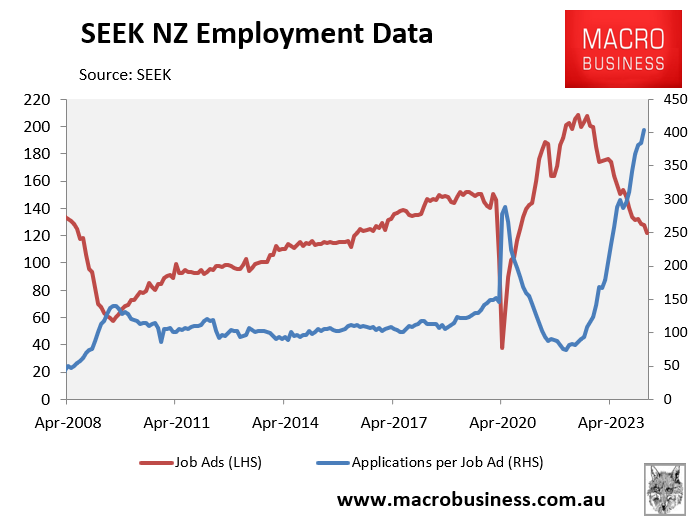
Other economic indicators are equally dire. As illustrated below by Justin Fabo at Antipodean Macro, Composite PMIs have recorded a collapse in new orders:
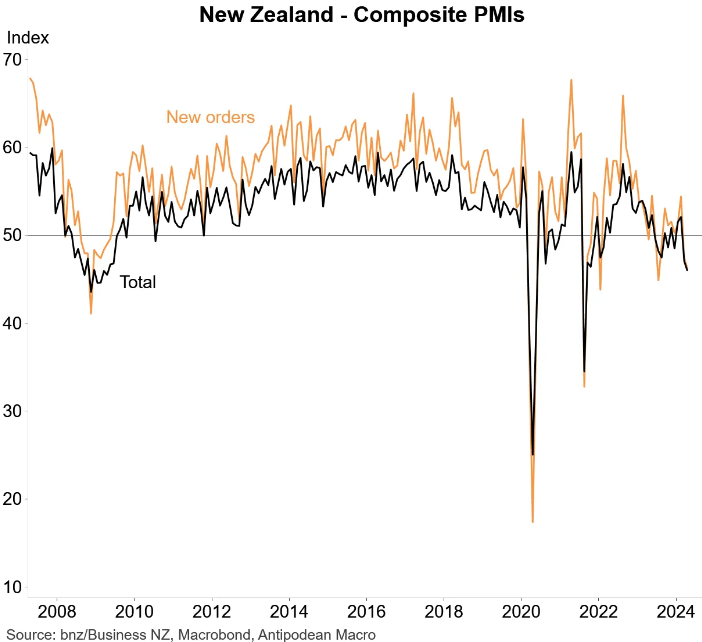
They have also signalled a further deterioration in New Zealand’s economic growth:
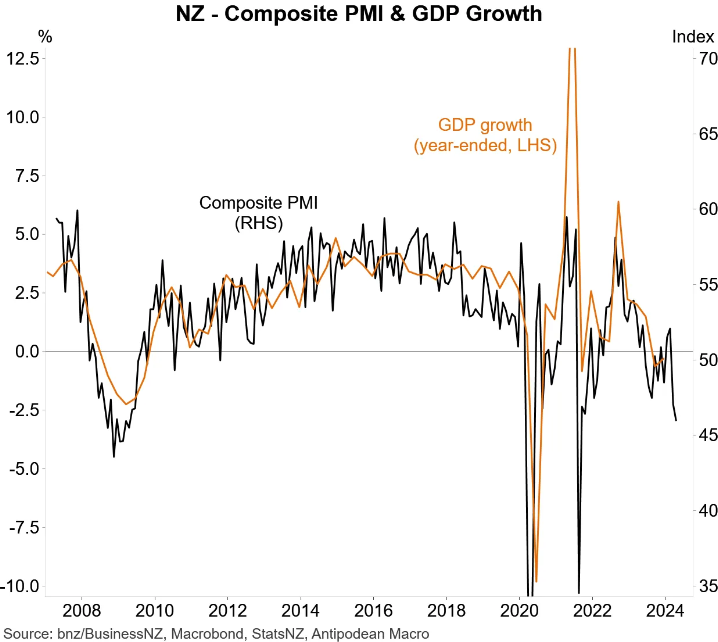
This is alarming given that New Zealand’s economy was already experiencing a technical recession in Q4 2023 and a very deep per capita recession:
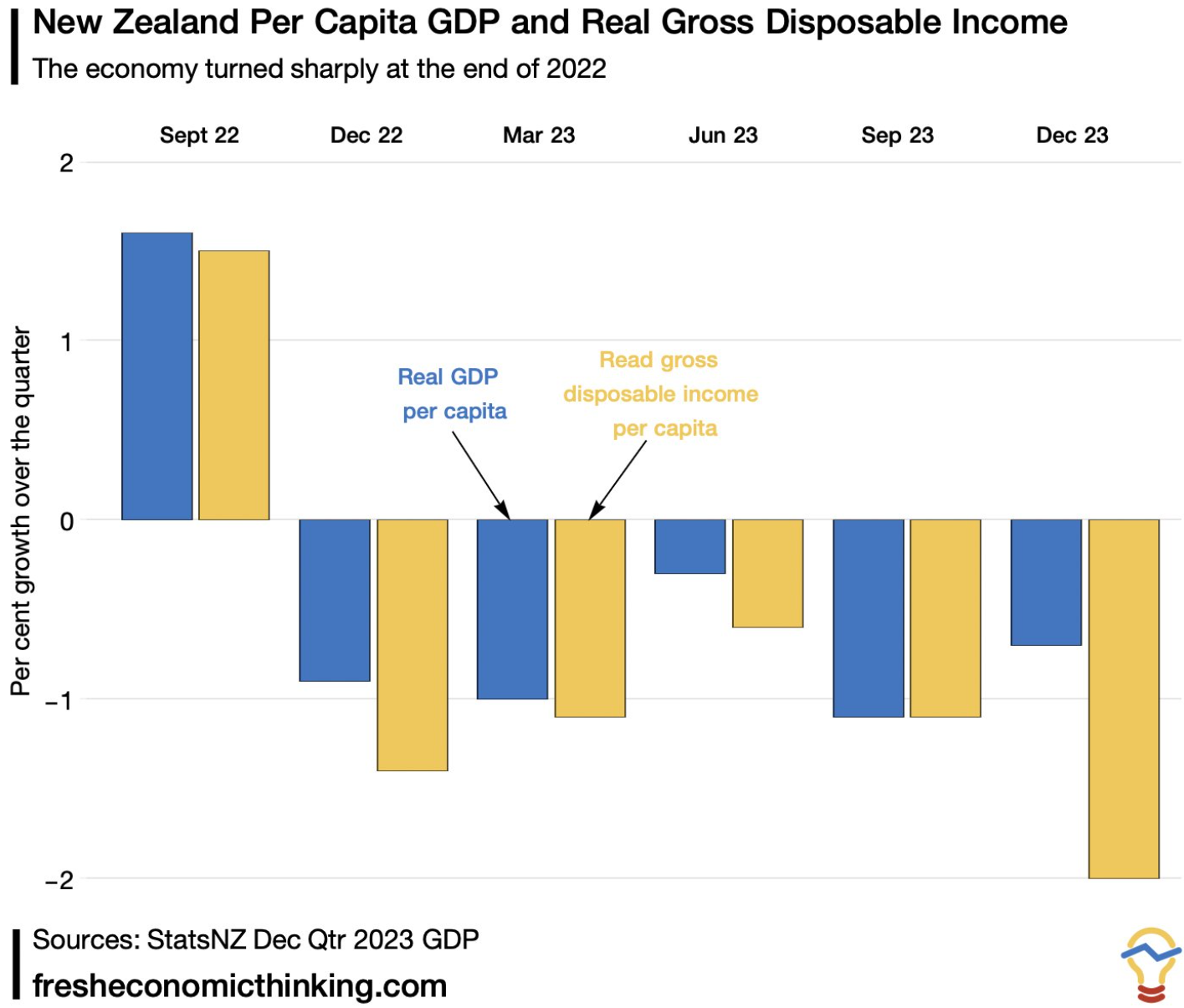
There is no way to sugar coat the situation.
Monetary policy is far too restrictive given the state of the economy, and the Reserve Bank must cut the official cash rate.
